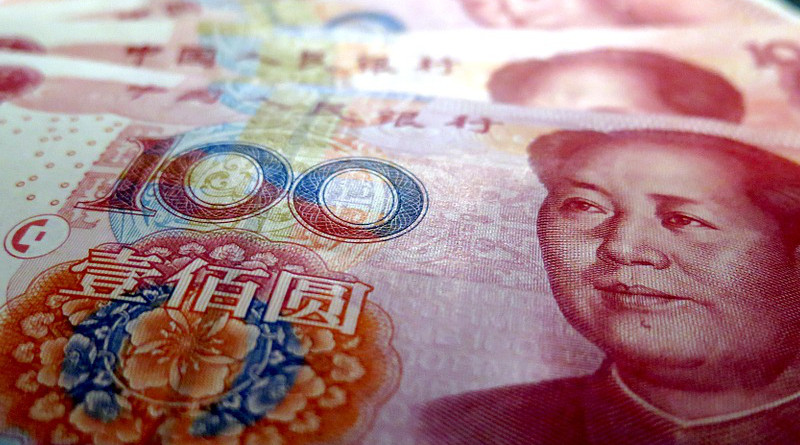Consumer Spending Critical To China’s Economic Recovery – Analysis
By Yan Liang*
It was a bleak year for the Chinese economy in 2022. Strict zero-COVID measures and regulatory crackdowns on the real estate sector and digital platforms slowed economic growth significantly. The annual real GDP growth of 3 per cent was significantly lower than the official target of 5.5 per cent. Chinese President Xi Jinping has indicated that the economy is the top priority in 2023.
Economic recovery in China hinges on reviving consumer demand. Exports and investment were the principal driving forces of demand in 2022, but they are unlikely to continue on the same trajectory. Export growth contracted in November 2022 due to falling external demand and a weaker global economy as a result of high inflation and monetary tightening. US efforts to ‘friend-shore’ or ‘near-shore’ manufacturing could further undermine China’s export production.
External demand is projected to continue falling in 2023 and private investment growth has been dampened by the property sector slump. Public infrastructure investment has filled the void, but continuous investment could further exacerbate the economic imbalances that the government is trying to avert. Consumer demand is crucial for economic growth in 2023.
The removal of COVID-19 restrictions allows more opportunities for consumers to shop and spend for the first time in almost three years. According to CEIC data, Chinese household bank deposits increased by 42 per cent since the beginning of 2020, totalling US$4.8 trillion. Pent-up demand is high and financial means are abundant but fear of infection and concerns about economic security have prevented households from spending.
China’s government could play an important role in stimulating consumer demand in the short-term as well as the medium- to long-term. Bolstering consumer confidence is key to accelerating economic recovery in the short-term. This requires the government to minimise the severity of infections by providing effective medical resources and services. Targeted cash handouts are needed for low-income households and consumption coupons could incentivise households to spend. Local governments could utilise the institutions and networks established in past poverty eradication initiatives to efficiently distribute cash assistance to low-income households in remote and rural areas.
More effective support must be given to the private sector which was battered by COVID-19, weakening external demand and supply chains. Policies should go beyond tax and fee cuts to include targeted lending and reduction of administrative burdens. The government should also consider subsidising the payroll of small and medium enterprises to lower the cost of their reopening.
Reviving private enterprises is essential to creating jobs and income, as they account for over 80 per cent of urban jobs in China. A thriving private sector would continue to generate jobs and income growth, which would not only bolster consumer confidence but provide stable financial means for consumer spending.
Increasing consumer demand in the medium- to long-term continues to be a challenge. Some economists arguethat consumption is low in China because its growth is export-led and investment-driven. Both the value of the yuan and wages are kept low to propel export growth and interest rates are depressed so industrial investment is effectively subsidised by low-cost household savings. The resulting low household income and wealth leads to low consumption.
As exports and investment drive job and income growth, reducing export and investment growth does not directly translate into higher consumption. Over the past two decades, China’s household consumption has grown at an average rate of 9.3 per cent per year, more than three times the world average, due to high income growth. Proposals to increase consumption by cutting investment growth miss the real question — how can a healthy consumption growth that sustains investment growth and improves consumer welfare be supported?
Productivity and income growth, distribution and redistribution are essential to boosting consumption in the medium- to long-term. The Chinese government should continue to invest in the high-tech sector, research and development spending and education to provide a sustainable basis for income growth.
Promoting consumption growth does not necessitate cutting public investment but requires investment to be productivity-enhancing. The ‘common prosperity’ initiative, which aims to reduce the rural–urban divide, expand public services and provide more opportunities for rural migrant workers, would go a long way to boost consumption growth. With 500 million Chinese residing in rural areas and the urban–rural income gap remaining high at 2.5:1, policies that support rural revitalisation are critical to reducing the wealth gap and boosting rural consumption.
The social safety net has been expanding in China over the past decade but public social protection expenditurehas remained low. Widening access to public services would reduce the need for precautionary savings, especially for migrant workers. Increasing consumer spending requires an increase, not a cut, in government spending.
China has attempted to boost consumption since the mid-2000s to address its unbalanced, uncoordinated and unsustainable economy — efforts which have been made more urgent by the current economic downturn. Boosting consumption growth should be driven by investment and government spending to ensure income continues to grow in a more equally distributed manner. This will require holistic policies and reforms.
*About the author: Yan Liang is Kremer Chair Professor of Economics and International Studies at Willamette University, Oregon.
Source: This article was published by East Asia Forum

